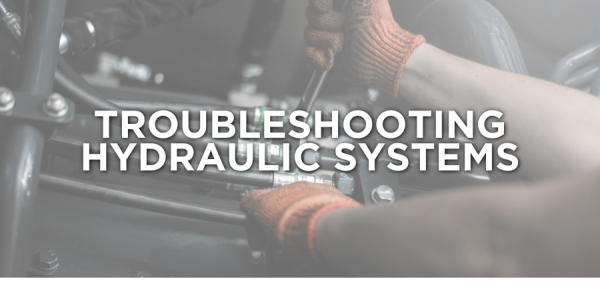Hydraulic power unit components, types, and applications.
A hydraulic power unit (HPU) is a vital component of hydraulic systems that converts mechanical energy into hydraulic energy, enabling the operation of machinery. It serves as the powerhouse for various hydraulic applications, delivering precise and controlled power for efficient and reliable performance in demanding environments.
What Are the Main Components of a Hydraulic Power Unit?
Hydraulic power units are complex systems, with several key components, each playing a crucial role in ensuring optimal functionality:
- Pump: The core of the HPU, responsible for generating hydraulic flow by converting mechanical energy from the motor into hydraulic energy.
- Reservoir: A storage tank for hydraulic fluid provides a steady supply to the pump. It can also help with heat dissipation, permit air to escape, and provide a settling area for contaminants.
- Motor: Drives the pump and provides the mechanical energy required. Motors can be electric, internal combustion engines, or hydraulic motors.
- Pressure Relief Valve: A safety feature that prevents excessive pressure buildup in the system by allowing fluid to return to the reservoir when pressure exceeds safe levels.
- Filters: Remove contaminants from hydraulic fluid, for clean circulation throughout the system necessary to protect components and maintain efficiency.
- Control Valves: Direct hydraulic fluid to various actuators, such as cylinders or motors, enabling precise control of movement and function.
- Hydraulic Fluid: The medium used to transmit power, lubricate moving parts, and facilitate heat transfer within the system.
- Piping and Fittings: Connects all components, allowing the hydraulic fluid to flow between areas seamlessly.
- Cooling System (optional): Regulates the temperature of hydraulic fluid, important for preventing overheating and ensuring consistent performance.
Types of Hydraulic Power Units
Hydraulic power units come in various types, each designed to suit specific applications and operational needs. Below are the most common types:
- Electric Hydraulic Power Units:
Powered by electric motors, these units are widely used in manufacturing, automotive, and construction industries. They offer precise control and automation, making them ideal for industrial applications. - Petrol or Diesel Hydraulic Power Units:
These units use internal combustion engines, making them suitable for remote locations where electricity may be unavailable. They are often used in agriculture, outdoor construction, and maintenance tasks. - Portable Hydraulic Power Units:
Compact and easy to transport, these units are perfect for fieldwork and applications requiring mobility. They can be powered by electricity, gasoline, or diesel engines. - Stationary Hydraulic Power Units:
Designed for fixed installations, these larger units are used in industrial applications requiring high power, such as presses, conveyor systems, and lifting devices. - Closed-Loop Hydraulic Power Units:
These systems recirculate hydraulic fluid within a closed circuit, improving efficiency and reducing fluid loss. Common in applications like hydraulic lifts and material handling. - Open-Loop Hydraulic Power Units:
These units draw fluid from a reservoir and return it after use. They are simple and cost-effective, making them ideal for basic hydraulic machinery. - High-Pressure Hydraulic Power Units:
Capable of generating very high pressures, these units are used in specialized applications like metal forming, injection molding, and hydraulic presses. - Multi-Pump Hydraulic Power Units:
Featuring multiple pumps within a single system, these units can handle varying hydraulic needs for complex operations. - Modular Hydraulic Power Units:
Designed with interchangeable components, these units provide flexibility and adaptability, making them suitable for mobile machinery and customized systems.

How Hydraulic Power Units Operate
The operation of an HPU is based on hydraulic force principles. Here’s a breakdown of its functionality:
- The motor activates and drives the pump.
- The pump draws hydraulic fluid from the reservoir and pushes it into the system.
- The fluid travels through control valves and piping to actuators like cylinders or motors, enabling them to perform specific tasks.
- After delivering energy to the actuators, the fluid returns to the reservoir, where it is filtered, cooled, or heated before restarting the cycle.
This continuous process provides controlled power for various industrial and mechanical operations.
Applications of Hydraulic Power Units
Hydraulic power units are indispensable across industries, powering a wide range of applications:
- Industrial Manufacturing: Used in injection molding machines, metal presses, and conveyor systems for precise and efficient operations.
- Marine: Essential for stabilizers, steering systems, and hoists in challenging marine environments.
- Aerospace: Actuate landing gear, flight control surfaces, and other critical systems in aircraft.
- System Test Rigs: Provide hydraulic power for testing and validating equipment designs before production.
- Construction Equipment: Powering excavators, bulldozers, and lifts.
- Automotive: Supporting car lifts, brake systems, and assembly lines.
Can Hydraulic Power Units Be Customized?
Yes, hydraulic power units can be customized to meet specific application requirements. Customization allows industries to tailor HPUs to their unique operational needs, ensuring efficiency, reliability, and adaptability. From component selection to performance specifications, custom solutions enable seamless integration into any hydraulic system. SIT specializes in the design, manufacture, and certification of advanced Hydraulic Power Units (HPUs), essential for powering a large variety of applications in oil & gas, industrial, marine, aerospace, and defense applications.
Maintaining Hydraulic Power Units
Proper maintenance ensures the longevity and efficiency of a hydraulic power unit. It is important to follow these essential steps:
- Regular Fluid Checks: Monitor and replace hydraulic fluid as needed.
- Inspect Hoses and Fittings: Look for wear, leaks, or damage and replace components promptly.
- Replace Filters: Ensure clean hydraulic fluid to prevent system damage.
- Monitor Temperatures: Use cooling systems to maintain optimal fluid temperature.
By following these steps, HPU life is extended and downtime is minimized.
For expert advice or custom hydraulic solutions, reach out to SIT today. We specialize in delivering tailored hydraulic power units designed for your specific needs.




